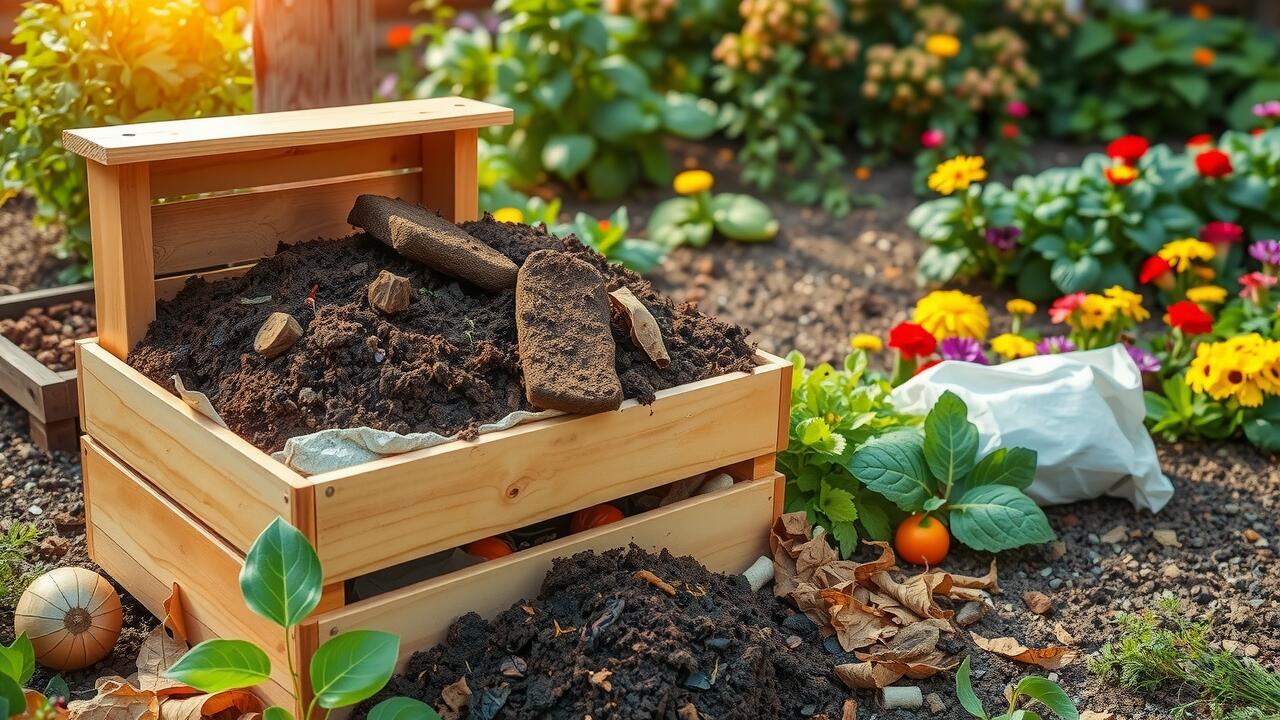Best Practices for Composting Fruit
When composting fruit, it’s essential to choose the right kinds to ensure a healthy compost pile. Fresh, unblemished fruit scraps are ideal, as they decompose quickly and contribute beneficial nutrients. Always chop larger pieces into smaller sections to speed up the breakdown process. Mixing fruit scraps with brown materials, such as dried leaves or shredded paper, can also help maintain an appropriate carbon-to-nitrogen ratio.
Monitoring moisture levels in the compost is crucial for successful decomposition. Fruit tends to contain high water content, which can lead to overly wet compost if not balanced with drier materials. Turning the pile regularly aerates it, encouraging decomposition and reducing odors. Keeping the compost pile covered helps retain heat and moisture while protecting it from pests.
This new blog post covers this topic in more detail.
Types of Fruit Suitable for Composting
Composting is a great way to recycle kitchen scraps, including various types of fruit. Fresh, organic fruits like apples, bananas, oranges, and berries are ideal for composting. These fruits break down easily, providing essential nutrients to the compost pile. It’s important to chop them into smaller pieces to accelerate decomposition and attract beneficial microorganisms.
Avoid using fruits that have been treated with pesticides or contain synthetic chemicals, as these can negatively affect soil health. Stone fruits like peaches and cherries are also suitable, but remember to remove pits before adding them to your compost. It’s best to include a balanced mix of green materials, such as fruit scraps, and brown materials, like dried leaves and cardboard, to create a thriving compost environment.
How to Add Moldy Fruit to Your Compost
Adding moldy fruit to your compost can be an effective way to enrich your compost pile. Start by cutting the fruit into smaller pieces. This increases the surface area, allowing microorganisms to break down the material more efficiently. Make sure to place the moldy fruit in the center of the compost pile, surrounded by dry materials like leaves or straw to balance moisture levels.
Monitor the compost regularly to ensure that the addition of moldy fruit does not create an imbalance. Maintaining proper aeration by turning the pile will help to accelerate the decomposition process. If you notice any unpleasant odors while composting, it may be necessary to add more carbon-rich materials or adjust the quantity of fruit being added.
Step-by-Step Process for Inclusion
When incorporating moldy fruit into your compost, start by inspecting the fruit closely. If the mold appears to be a harmless variety, such as those typically found on produce, you can proceed. Cut the fruit into smaller pieces to accelerate the decomposition process. This increases the surface area exposed to beneficial microbes that will aid in breaking down the material.
Next, mix the moldy fruit with a balanced ratio of brown and green materials. This helps control moisture levels and ensures that the compost stays aerated. Turn the compost regularly to enhance aeration and distribute the mold evenly throughout the pile. Monitor the temperature and moisture levels, which should remain consistent to facilitate effective composting.
Alternatives to Composting Moldy Fruit
Moldy fruit can be repurposed in various ways instead of placing it directly in compost. One effective option involves using it to enrich soil by blending it into a homemade fertilizer. Simply chop the fruit into smaller pieces and mix it with other organic materials like leaves or grass clippings. This creates a nutrient-rich blend that can boost soil health.
Another approach is to utilize moldy fruit in creative culinary projects. Certain fruits can still impart flavors even when they show signs of spoilage. For instance, overripe bananas can be used in smoothies or baked goods, adding natural sweetness. However, it’s essential to assess the fruit carefully, as some molds can be harmful. Discard any fruit that appears extremely degraded or unsafe before using it for cooking or baking.
Creative Uses for Moldy Produce
Moldy fruit can often be repurposed in innovative ways rather than simply being discarded. One effective use is as a natural fertilizer. By blending moldy fruit into a smoothie consistency, you can create a nutrient-rich concoction that provides essential vitamins and minerals for plants. This method ensures that the nutrients contained in the moldy fruit are harnessed, promoting healthier growth in your garden.
In addition to gardening, moldy fruit can be transformed into homemade vinegars or fermented beverages. By soaking the fruit in sugarwater for several days, you can initiate fermentation, resulting in a flavorful addition to salad dressings or marinades. This process not only reduces food waste but also creates unique flavors that can enhance culinary dishes.
FAQS
Is it safe to compost moldy fruit?
Yes, it is generally safe to compost moldy fruit, as long as you follow proper composting practices to prevent any potential issues.
What should I do if I have a lot of moldy fruit?
If you have a large quantity of moldy fruit, consider adding it gradually to your compost pile or bin, ensuring it is mixed well with other green and brown materials to maintain balance.
Can moldy fruit attract pests to my compost?
Yes, moldy fruit can attract pests, such as fruit flies and rodents. To minimize this risk, ensure your compost pile is well-aerated and regularly turned.
Are there any types of moldy fruit I should avoid composting?
While most moldy fruit can be composted, it’s advisable to avoid adding fruit that is heavily infested with pests or has begun to rot extensively, as this can lead to unpleasant odors and attract unwanted visitors.
What are some creative uses for moldy fruit if I don’t want to compost it?
Moldy fruit can be used in various ways, such as making homemade fruit vinegar, using it in DIY beauty treatments, or as a natural fertilizer when diluted.
